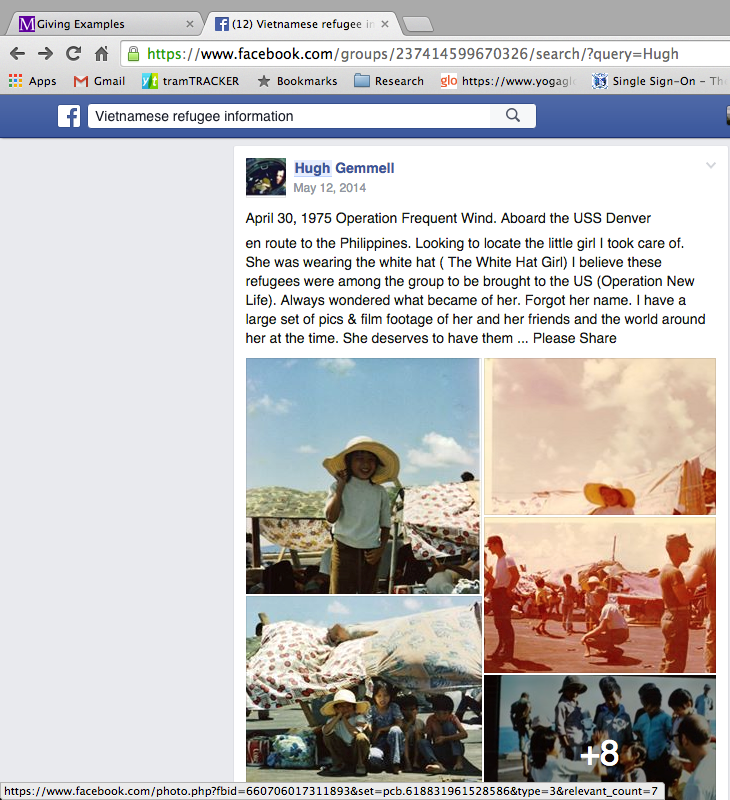The Girl in the Picture
“Looking for this girl from the film footage , Please pass on , I would like to give her this collection of Pics & film footage. It’s part her history as well as mine.”[1]
Thuy recently sent her these posting from his Facebook page and she had not been able to respond. It just happened that she was starting a PhD based on her family history. How did this person have such information about her and she had no memory of him?

They met at the Ian Potter café just on the edge of Melbourne University. He was recently invited to speak about his work on secondary trauma for aid workers during the Vietnam War. She sat across from him and starred hard into his face trying to remember a trace of the familiar, but she could not. Even after their meeting, she could not piece together the memory of him. All she had to go on was what he remembered.
She had asked, “Why did you take so many pictures of me?”
He had replied, “I was relieved from the front lines to teach English to the students in the camp after the army doctor diagnosed me with shell shock. You were one of the students I shot as a part of the photography and film footage I sent home to my family. I had wanted to be a film maker, but got drafted before I had a chance to go to college.”
He sort of evaded the question. She understood this as a part of his personal history and did not press for an answer.
She asked in another way, “What were you hoping or expecting when you or if you had found me?”
He answered, “I just wanted to thank you. I had always wondered what happened to you because you were particularly bright and eager to learn. You even tried to translate for your parents whenever they wanted me to go the immigration office to ask about the status of their application. After a year in the camp, you and your family were accepted into Australia. I did not think I would ever see you and your family again until I discovered Facebook.”
She did not know where to go from there. Was he familiar with her family, would he start to ask about their whereabouts? Something about the conversation did not sit well with her. He interrupted her thoughts, “So what are you doing here in Australia now?”
“I am writing my PhD about Vietnamese settlements in Melbourne. ” she replied.
“Wow,” he gasped and turned to look off in the distance at the large elm tree planted in the middle of circle of Ecalyptus. “I hope these pictures and film will be of use to you.”
“Thank you,” she said, “I am sure that they will. I have to go to class now, but perhaps we could meet again before you return to the states?”
“Of course,” he said. She stood up to say, “goodbye,” like an outline lifting from the print of a page.
Hugh rang his wife that night to tell her that he had found the girl in the picture. The Skype connection was not clear, but he held up the picture that he had posted on Facebook five years ago. She smiled at the camera on the other end and put a finger up against the screen to trace the tears welling up on the screen.
[1] Hugh Gemmel, October 8, 2014 at 2:54pm, “Vietnamese Boat People Refugee Camp, 25 Hawkins Road, Sembawang, Singapore,” Facebook public group, https://www.facebook.com/groups/98995200578/, accessed 22 June 2015.
*This is a creative non-fiction imagined encounter based on one area of the research I am exploring. – Anh Nguyen, PhD Candidate History, University of Melbourne
Categories
Leave a Reply